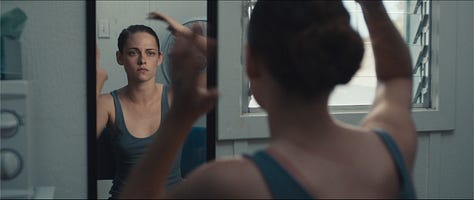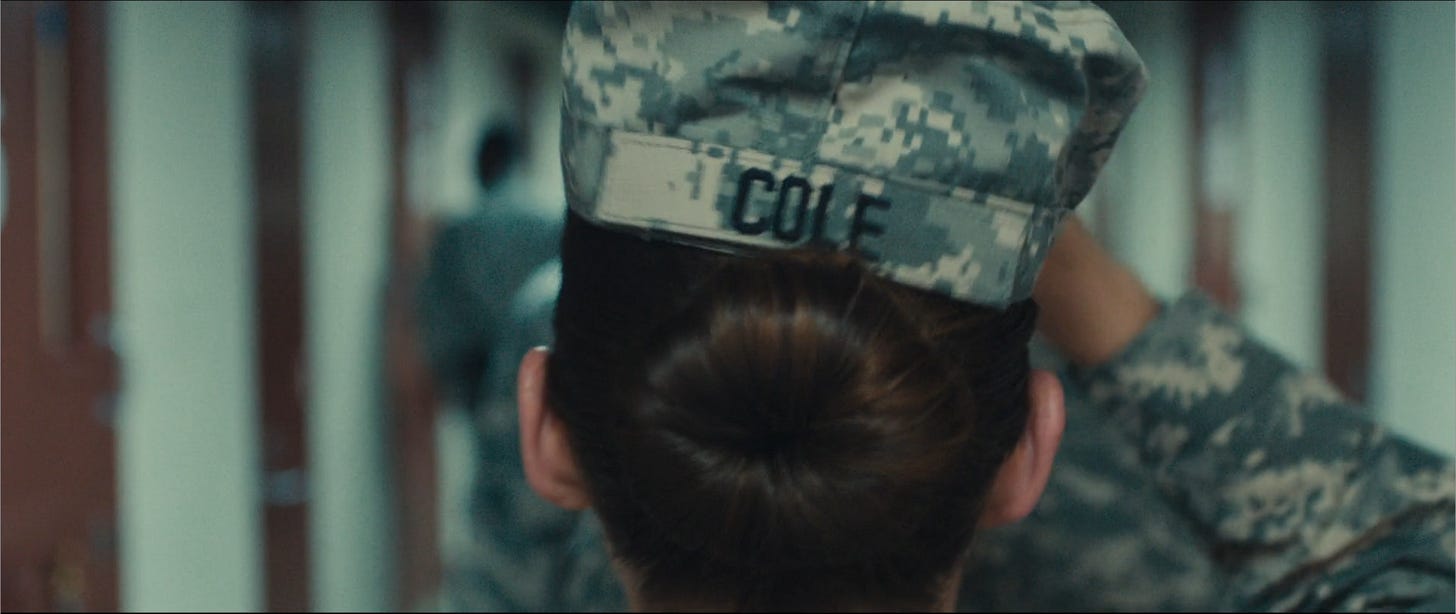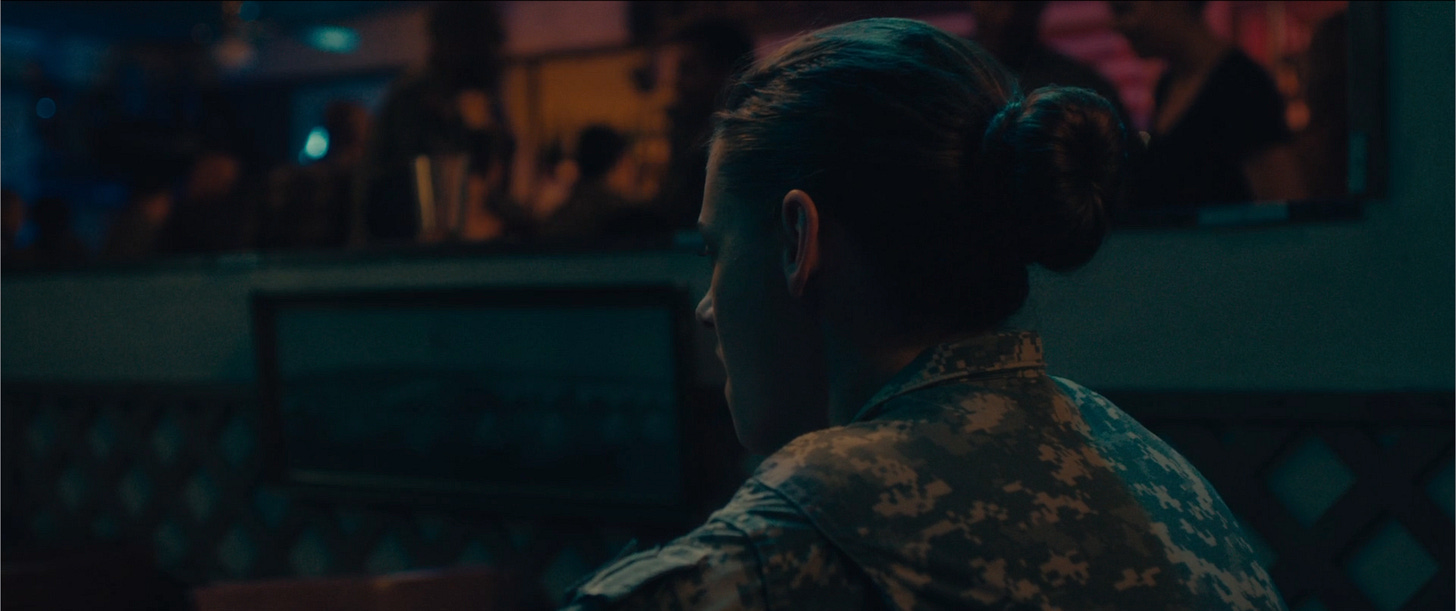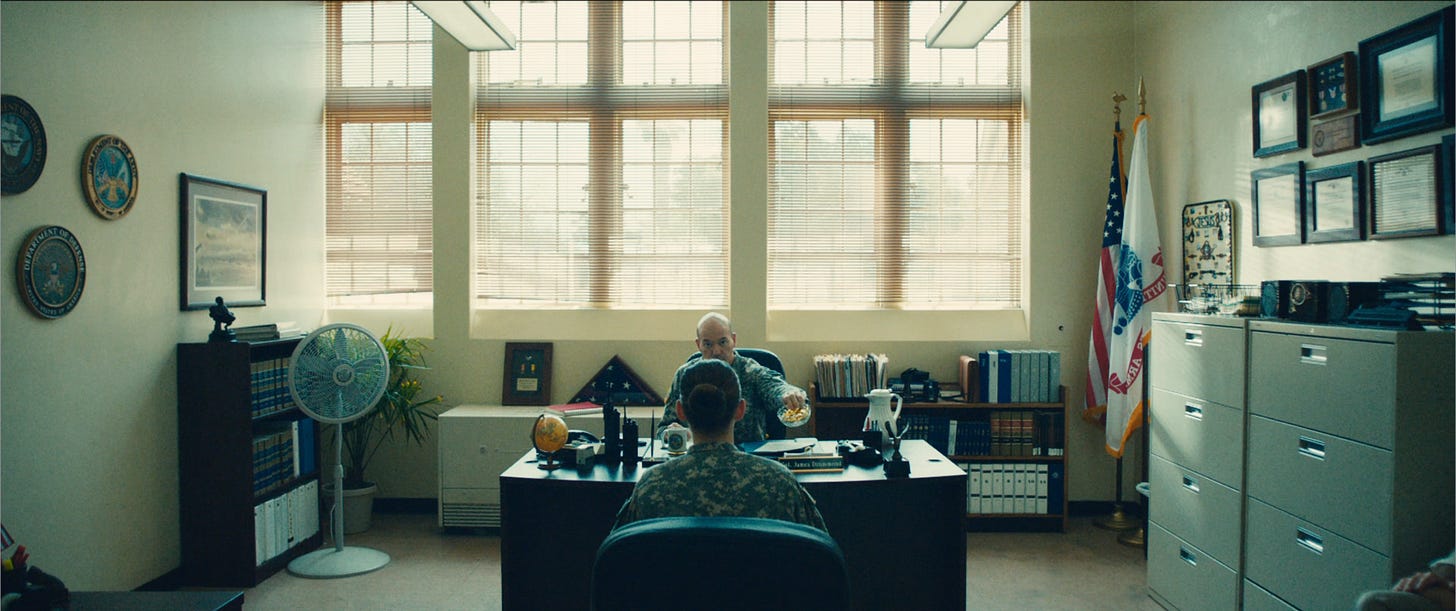Matt Zoller Seitz on Repetition, Framing, and Montage in CAMP X-RAY
In his review of Camp X-Ray, Matt Zoller Seitz discusses how the film — shot mostly in the limited and limiting location of a cell block — uses framing to emphasise elements and themes.
Below are a few quotes from the review along with stills / clips which illustrate them.
Theme Through Repetition
As the story unfolds, there are many close-ups taken from behind Stewart’s shoulders as Amy walks through the camp or down a cell block corridor, or sits in a chair in the mess hall or in her apartment, thinking. Our eye naturally gravitates toward her hair, which is pulled into a tight bun. The bun is at the center of the frame during so many important scenes that it eventually seems to stand for both Amy’s tightly wound personality and her workplace predicament.









Montage
The editing, by Geraud Brisson, juxtaposes shots in cheeky ways, as when the movie crosscuts between a Muslim call to prayer and soldiers lining up for morning inspection: the sequence is capped by a shot of the the US flag flapping in the breeze, as if to suggest that blind faith in a nation's goodness is its own kind of state religion.
A few ShotZero notes on the sequences above:
Parallels include two people sitting on their beds eating rations (0:00-0:13); bare feet shuffling to military boots marching (1:14-1:24), detainees bowing on rugs with hands prominent to soldiers saluting a flag (1:31-end).
From 0:14-0:30, the reflection of COL James Drummond (John Carroll Lynch) often looms over and covers PFC Amy Cole (Kristen Stewart). At this point in the film, Drummond has used his position to block Cole’s formal complaints about the military violating morals and rules; the visuals here clearly echo how she feels about being overwhelmed by her superior officers.
Framing
Sattler and his cinematographer, James Laxton, compose striking shots that advance the story and comment on the script’s themes without becoming ostentatiously pretty. The movie makes great use of the camp’s coldly anonymous architecture, framing guards and prisoners within rectangles and squares and converging diagonal lines, and sometimes dwarfing them in long shots that have the geometric solidity of a Piet Mondrian painting.
Takeaways
When a script brings inherent limitations — such as wardrobe and location — a natural response may be to see how many different things you can do with angles. Camp X-Ray takes the opposite approach, using repetition to drive its theme, or bring to the audience the crushing sense of interminability — a feeling which you can also then effectively break with one or two shots, before returning.
Matt Zoller Seitz’s review points out how effectively these elements work when put together: framing shots is important, yes, but it’s only a small part of a movie. The use, repetition, and juxtaposition of those shots are crucial to telling a complete story.









